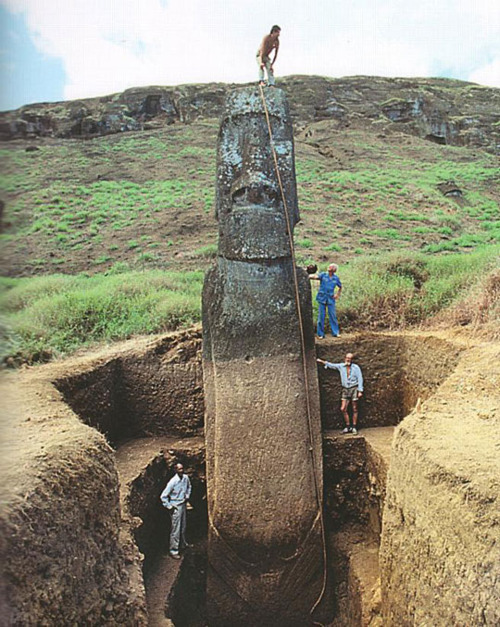#rapa nui
Text
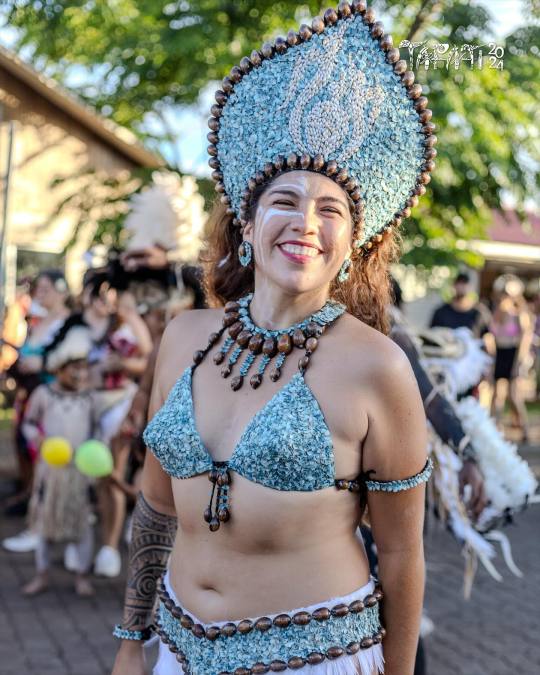
Rapa Nui woman, Rapa Nui, by Tapati Rapa Nui Oficial
#rapa nui#polynesia#oceania#folk clothing#traditional clothing#traditional fashion#cultural clothing
335 notes
·
View notes
Text
Time Travel Question 34: Medievalish and Earlier 3
These Questions are the result of suggestions from the previous iteration.
This category may include suggestions made too late to fall into the correct earlier time grouping. Basically, I'd already moved on to human history, but I'd periodically get a pre-homin suggestion, hence the occasional random item waaay out of it's time period, rather than reopen the category.
In some cases a culture lasted a really long time and I grouped them by whether it was likely the later or earlier grouping made the most sense with the information I had. (Invention ofs tend to fall in an earlier grouping if it's still open. Ones that imply height of or just before something tend to get grouped later, but not always. Sometimes I'll split two different things from the same culture into different polls because they involve separate research goals or the like).
Please add new suggestions below if you have them for future consideration. All cultures and time periods welcome.
#Old English#Middle English#Linguistics#Vikings#North American History#Time Travel#Early Middle Ages#Indigenous History#Prester John#Middle Ages#Koran#Greenland#King Olaf#Arthuriana#Post Roman Britain#Heian Era Japan#Japanese History#Rapa Nui#Ammonites
129 notes
·
View notes
Text
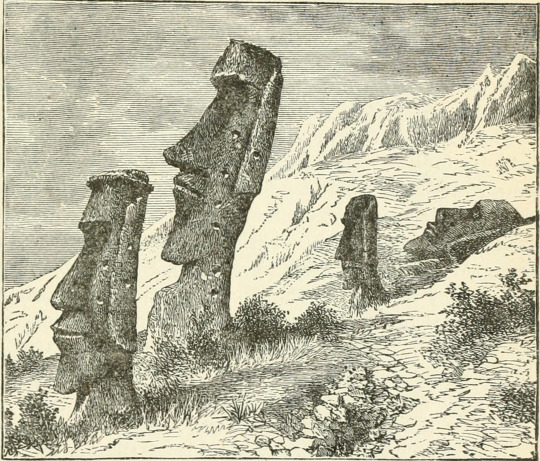
"Wonderful monuments of Easter Island." Marvelous wonders of the whole world. 1886.
Internet Archive
#rapa nui#easter island#moai#indigenous art#polynesia#statues#sculpture#geography#nemfrog#1886#19th century
295 notes
·
View notes
Text
The Maoi of Rapa Nui
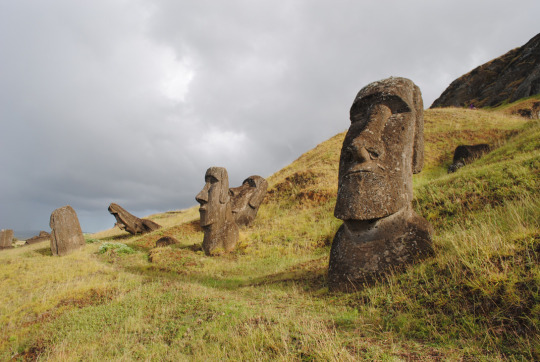
Moai chieftain statues are the famous massive megaliths of Rapa Nui (aka Easter Island) in eastern Polynesia, carved about 1250-1650 CE by the original Polynesian colonizers of the island.
Many know them as "Easter Island heads," a misconception from having seen photos of statues in the volcano Rano Raraku partitially covered with soil. They all have full bodies with over-large heads - a 3:5 ratio between head and trunk, a sculptural trait consistent with the Polynesian belief in the sanctity of the chiefly head.

The island holds nearly 1000 statues, each weighing as much as 90 tons and standing up to 10 meters tall, though they average around half that. One unfinished sculpture would have stood 21 meters (69 feet!) tall and weighed 180 tons. More statues are still being discovered.
Almost all (95%) of the moais were carved from the volcano's stone tuff - compressed volcanic ash that's relatively easy to carve using only stone tools (toki).
Probably the biggest mystery is how tribes using Stone-Age tech could succeed in transporting 50-ton moai statues across kilometers of hilly terrain. Because the island was largely treeless by the time Europeans first arrived (by which time local culture and history had largely collapsed), the movement of the statues was a mystery for a long time.
Some transportation theories are more accepted than others:
The earliest accounts say a king named Tuu Ku Ihu moved them with the help of the god Makemake, while later stories tell of a woman who lived alone on the mountain ordering them about at her will.
The longest-held European hypothesis was that the moai statues were dragged from the volcano to their destinations along log rollers, which also explained how the island became deforested. Pollen analysis has established that the island was almost totally forested until 1200 CE, and tree pollen disappears from the record by 1650.
However, Iceland demonstrates how simply using wood for construction and fire can quickly deforest an island.
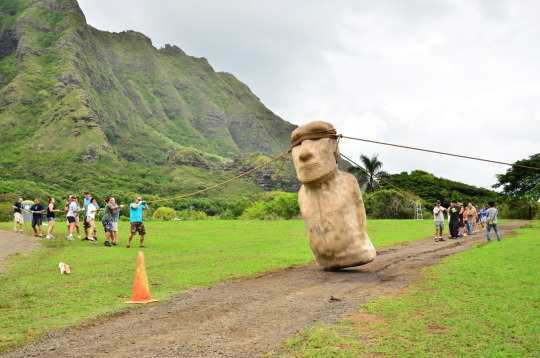
According to oral tradition, the moai statues walked to their destination. A literal interpretation is that the statues were rocked from side to side while pulling them forward to "walk" them to their final sites, as demonstrated in this recent experiment. This theory holds the most scholarly support today.
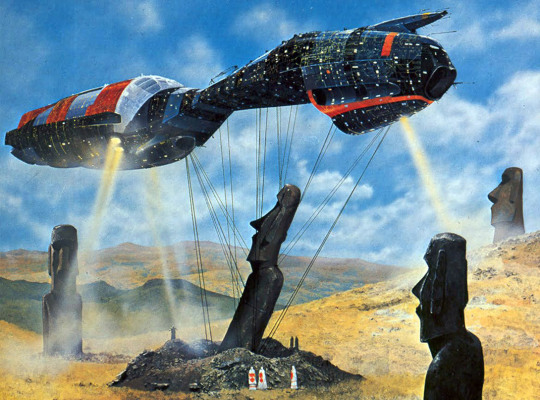
A not-uncommon but highly unlikely (and, y'know, disrespectful) claim is that aliens placed the moai statues for the locals. Occam's razor suggests this probably isn't the answer. But everyone loves aliens. The debate continues.
The ancient period ended when the Rapa Nui people were devastated by Peruvian slave-raiding expeditions that reached the island in 1862. Within a year, the individuals who remained on the island were sick, injured, and lacking leadership. Survivors of the slave raids had to deal with Christian missionaries. By the time Europeans arrived in 1722, the island's population was estimated at less than 3,000. Foreign diseases and emigration to other islands such as Tahiti further depleted the population, reducing it to a low of 111 native inhabitants in 1877.
Chile annexed the island in 1888, but it wasn't until 1966 that the Rapa Nui were granted Chilean citizenship. The 2017 census registered 7750 people on the island, of whom 3512 (45%) consider themselves Rapa Nui.
The original inhabitants live on among their famous megaliths.
95 notes
·
View notes
Text
Imagine unearthing wooden tablets inscribed with a mysterious script on the remote and enigmatic Easter Island. That's exactly what explorers did in 1864, uncovering 27 tablets with the Rongorongo script. The big question has always been: Is this script truly ancient, predating the first European settlers?
Thanks to groundbreaking research by a team of Italian and German scientists, we're closer to answering that question.
26 notes
·
View notes
Text
Please reblog for a bigger sample size!
If you have any fun fact about Rapa Nui, please tell us and I'll reblog it!
Be respectful in your comments. You can criticize a government without offending its people.
27 notes
·
View notes
Text

Moai Head, Chile, Between circa 1250 and circa 1500,
Basalt, H 170 cm (66.9 in) , W 100 cm (39.3 in), Thick 90 cm (35.4 in)
Collection Musée du Quai Branly, Paris.
#art#history#design#style#archeology#sculpture#antiquity#figure#moai#head#basalt#musée du quai branly#rapa nui#easter island
19 notes
·
View notes
Text
IN OTHER NEWS...
British Museum Instagram blocks commentaries after thousands of Chileans fill the box demanding them to return the stolen Moai from Rapa Nui




The commentary section on the British Museum Instagram has been limited for two days now after a horde of Chileans filled the posts demanding to have the Moai back to Easter Island.
Hoa Hakananai'a is a Moai carved in basalt from the foot of the volcano around 1000 to 1600 aC by the Rapa Nui people. It was stolen from a ceremonial place and taken away on November 7th of 1868. Later, Queen Victoria gifted it to the British museum and it's been exhibited there since.
There have been many requests by the Rapa Nui people and the Chilean government to have the Moai back where it belongs, Rapa Nui people even offered to make a copy of the statue and exchange it without cost for the original, but the British museum refuses on the allegation that Rapa Nui doesn't have a plan to preserve the statue with the sea level rising up. Yet this studies were previous to 2018 and the conditions on the island have changed since then.
Now, motivated by an influencer on tiktok and their previous experience with Adam Levine (Maroon 5), Chileans came by thousands on Instagram filling commentaries box demanding the Moai back.
16 notes
·
View notes
Photo

Man atop a moai, Easter Island (Rapa Nui), circa 1936.
#Moai#Rapa Nui#Easter Island#30's#30s#South Pacific#c.1936#20th century#20th century photography#b&w photography#black & white photography#island#statue#statues#Chile
530 notes
·
View notes
Text
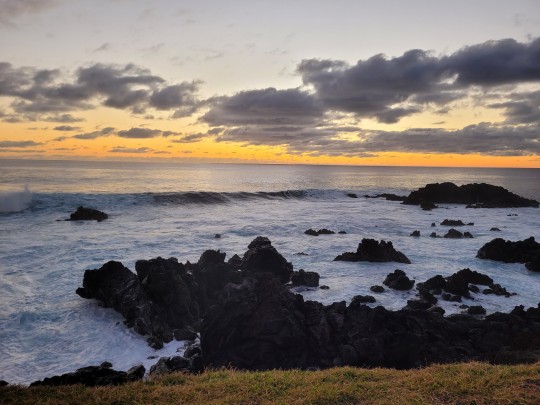

Rapa Nui y sus atardeceres inolvidables.
21 notes
·
View notes
Photo

The sea ponies are just relaxing next to Ahu Tongariki and the moai.
On Rapa Nui (Easter Island).
#My Little Pony#g1#sea pony#wavedancer#ripple#beachcomber#seawinkle#tongariki#ahu tongariki#rapa nui#easter island#why yes i did travel with over 2kg of plastic ponies in my luggage
56 notes
·
View notes
Text
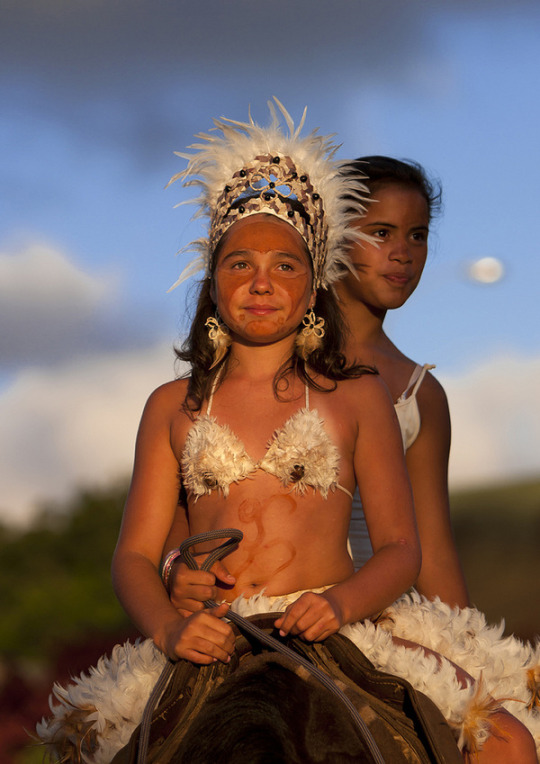
Rapa Nui girls, Rapa Nui, by Eric Lafforgue
#rapa nui#oceania#polynesia#traditional clothing#traditional fashion#folk clothing#cultural clothing
191 notes
·
View notes
Text
youtube
Easter Island moai walked
from Nature Newsteam
50 notes
·
View notes
Text


Descendants of the First Seafarers
Some of the ancestors of the native peoples of Madagascar, Malaysia, Indonesia, and the Pacific Islands (Micronesia, Melanesia, Polynesia) came from an ancient seaborne migration out of Taiwan and the Philippines (2200 BCE - 1250 CE). Cultural traditions still shared among these far-flung peoples today include tātau (tattoos), jade carving, stilt houses, and the cultivation of taro, pork, rice, coconuts, and yams.
#austronesian#pinoy#polynesian#melanesian#micronesian#aanhpi#maori#rapa nui#malagasy#oil on wood#tatau#pacific islander#size chart#gay art
13 notes
·
View notes
Text
Easter Island is famous for its statues, the moai, but what about the civilization that built them? Known as the Rapa Nui, historians don’t know why their civilization fell.
24 notes
·
View notes
